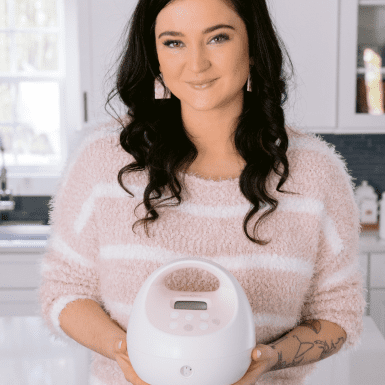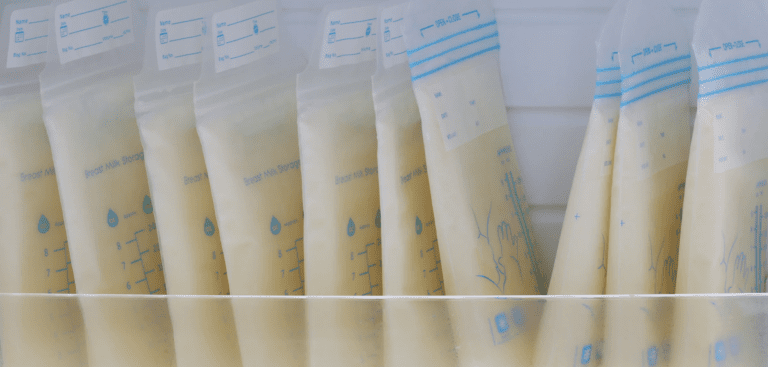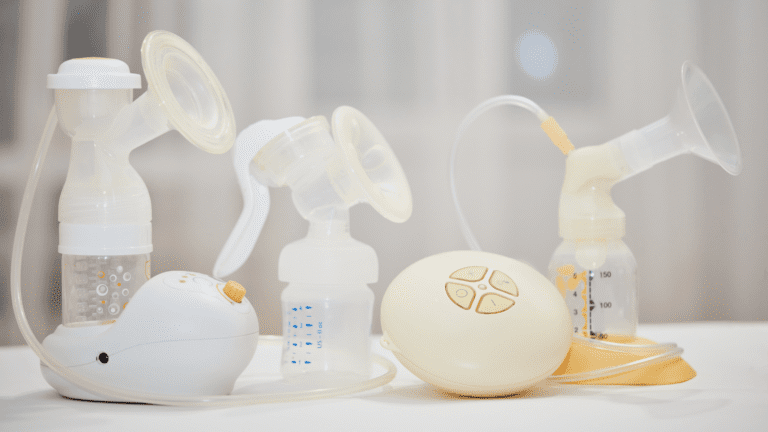5 Things Every Mom Should Know About Pumping Before Going Back to Work
Heading back to work after baby?
Deep breath.
You don’t need to have a freezer overflowing with milk or a rigid routine in place from day one. Prepping to pump at work isn’t about doing it perfectly—it’s about doing it in a way that works for you and extending yourself grace when things may not go as planned.
Let’s break down five things every pumping mom should know before clocking back in. These tips will help you feel confident, not overwhelmed—and make the whole process much less stressful.
Disclosure: This post contains affiliate links. If you click on a link and make a purchase, I may earn a small commission at no extra cost to you. I only recommend products I genuinely trust and believe will be helpful to my readers.You can read more about the affiliate disclosure here.
1. When to Start Pumping Before Going Back To Work
If your return to work is coming up, a little bit of early prep can go a long way. You don’t need to start pumping in the first weeks postpartum (unless you want or need to). But once your supply feels established—usually around 4 to 6 weeks—you can begin adding a pump session into your day.
Start with one session after the first morning feed when your supply is typically higher. This is a low-stress time to start building a small stash and get comfortable with your pump. Once baby is comfortable with the bottle (usually around 6 weeks), aim to introduce a bottle once a day or a few times a week. This helps baby get used to someone else feeding them and lets you build up your stash gradually without messing with your supply.
Use those early pumping sessions to experiment with your pump settings and get used to cleaning and assembling all the parts. Set yourself up now for less stress later, and start pumping before going back to work.
2. How Much Milk You Actually Need For Pumping Before Going Back To Work
Here’s your permission slip to relax: you do not need a freezer packed with bags of milk.
Most babies take around 1–1.5 oz of milk per hour that you’re away. If you’re gone for 8 hours, that’s roughly 8–12 oz. That’s it.
Instead of stockpiling hundreds of ounces, focus on having 2–3 days’ worth in the freezer and rotating your stash (oldest milk gets used first). That’s manageable and avoids waste from expired milk you never get to.
Your body will make what baby needs day by day. Focus on keeping your supply steady and your stash moving. A little planning goes a long way.
Join The Latch Link Newsletter!
3. Flange Fit Is Everything
Uncomfortable pumping? It’s not supposed to hurt.
The truth is, most moms are using the wrong flange size—which means less milk and more discomfort. A good fit helps you empty better, protect your nipples, and feel like pumping isn’t torture (because it shouldn’t be).
If you need more help, the Flange Fit Fix is a simple tool that helps you measure and match the right size for your body. Say goodbye to one-size-fits-none and hello to effective, pain-free pumping. A properly fitting flange can seriously increase output and reduce time spent pumping.
4. Sample Pumping Schedules
There’s no perfect schedule, but here’s a basic idea to help you plan:
- Before work: Nurse or pump
- Morning break: Pump
- Lunch break: Pump
- Afternoon break: Pump
- Evening: Nurse or pump if needed
That’s three sessions during the workday—roughly every 2.5–3 hours. Try to match baby’s feeding times, especially early on, to protect your supply.
And remember: you’re legally entitled to break time and a private space to pump (not a bathroom). Don’t be afraid to talk to your employer about what you need—they can’t support you if they don’t know. It helps to give them a heads-up in advance so accommodations can be made before your first day back.
5. Tools That Help (a LOT)
You don’t need every gadget under the sun—but the right gear can significantly lighten your load. A few tried-and-true tools I love are:
Coolers – Keep milk fresh while you’re on the go. This is a great option.
Hands-free pumping bras – Multitask like a pro while you pump. I love this one. Total game-changer for comfort and convenience.
Pumping bags – This bag is roomy, organized, and easy to clean. It’s a lifesaver when you’re lugging bottles, flanges, snacks, and your laptop.
Snacks – You’re still fueling your body to make milk. Toss some high-protein, grab-and-go options in your pump bag. Granola bars, trail mix, or lactation cookies all work great.
These tools make a real difference in your daily experience—and help you stick with it longer. Don’t be afraid to treat yourself to a few things that make life easier.
Returning to Work Soon?
Mama, you’ve got this—and you don’t have to figure it all out alone.
Book a consult with a lactation pro who gets it, or grab the tools you need to make pumping before going back to work, work for you. Whether you’re headed to an office, a classroom, or a hospital floor, there’s a way to make it happen—and support to help you get there.You’re not behind. You’re prepared. Let’s make this transition work for you.
Need some help?
Breastfeeding help made easy. Book your virtual consult today!
We are proud to offer 100% covered care with Aetna, Cigna, Anthem PPO, BCBS PPO and UHC plans.
Liked this post? Don’t forget to Pin it!












